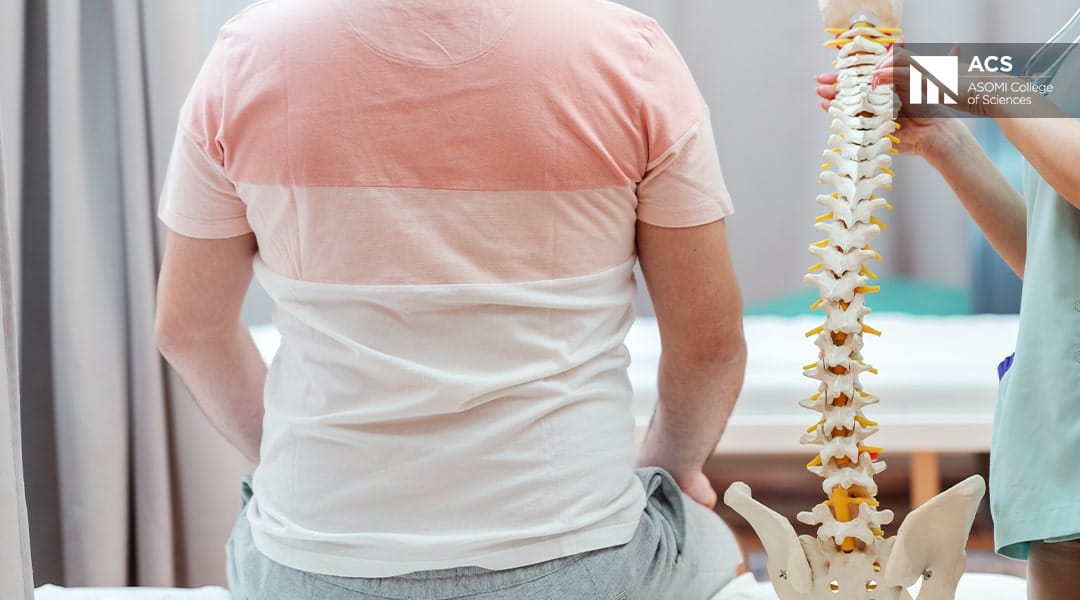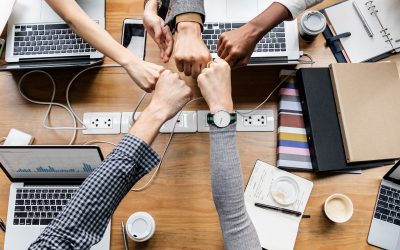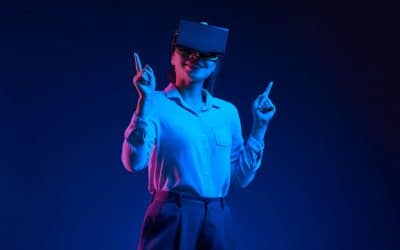About the author:
Eric Prat is a French osteopath who graduated in 1988 from the A.T.STILL Académie in Lyon (F), and who began collaborating in 1990 with Paul Chauffour, another French osteopath and the founder of LMO, who graduated from the European School of Osteopathy in Maidstone. Eric Prat is the co-author of numerous international publications concerning LMO and teaches it at the Lien Mécanique Ostéopathique institute. The Lien Mécanique Ostéopathique (LMO) is an original osteopathic method developed over more than 40 years of research and clinical experience. The concepts of the founder of osteopathy, A.T. Still, it has been deepened to lead to a modern and effective practice.
What is the mechanical link?
Mechanical Link (in French, Lien Mécanique Ostéopathique or LMO) was developed in the 1970’s and 1980’s by Paul Chauffour, one of the first French osteopaths trained in England, at the European School of Osteopathy (Maidstone) [1]. Paul Chauffour realised immediately the limitations of a type of osteopathy where diagnosis is largely based on the symptomatic area and where the treatment essentially consists of vertebral manipulations and General Osteopathic Treatment (GOT). This approach did not really offer concrete answers to the majority of questions brought up when treating patients [2].
What is a total lesion ? How do we find the primary lesion? From where to begin the osteopathic treatment? Which technique to use ? What is the right path to follow from the beginning to the end of the osteopathic treatment ? At what point should the osteopathic treatment stop ? These are some of the questions brought up in this article.
Inspired by texts describing articular techniques used in the 1930’s in the United States [3], Paul Chauffour devised a test based on applying slight tension to a structure in order to reveal the presence of osteopathic lesion. He then discovered that, when simultaneously applied to two structures in lesion, the test resulted in a reflex response of releasing the less important lesion. This was a major discovery, that gave a priority order to other lesions. Finally, inspired by the toggle-recoil, he elaborated a technique enabling him to treat easily any type of lesion found: the recoil technique. The association of these three techniques[4], resulted finally in a complete method of diagnosis and treatment: the Osteopathic Mechanical Link.
With the help of these three techniques and a simple and logical protocol of addressing the patient, LMO practitioners have rapidly been able to answer the aforementioned questions:
- What is the total lesion ?
The tension test allows to perform rapidly a great number of tests [5] and thus, to consider all the structures including those located far from the symptomatic region. The goal of these tests is to diagnose the total lesion (the set of lesions found in the patient).
- How do we find the primary lesion and where do we begin the osteopathic treatment ?
The inhibitory balance test determines which, among all the lesions previously diagnosed using tension tests, proves to be the most important one (the primary lesion). Thus, this primary lesion becomes the first lesion to be treated in this patient.
- What technique to use ?
The recoil technique gives a simple, quick and efficient way for treating any kind of osteopathic lesion, whatever the location: spine, extremities, cranium, organs, vascular or nervous system, etc. Although other approaches, including the advantages as well as the drawbacks, may be used, the recoil technique has been so satisfactory that it rapidly stood out as the best technique at our disposal.
- Which is the right path to follow from the beginning to the end of the osteopathic treatment ?
The treatment of the primary lesion presents a beneficial effect of normalising, from a distance, all the adaptive (compensatory) lesions that were related to it. One must therefore simply verify, among the initially found lesions, which ones are still there and, after organizing them on the basis of their priority, treat the new dominant (secondary lesions) by using the recoil technique. And so on and so forth after each adjustment of a new dominant lesion (third lesion, fourth lesion, …) knowing that this way the number of lesions that remain decreases more and more each time. Because of this thread, the osteopathic treatment of each subjects follows its unique path, both clearly marked by the therapist and perfectly adapted to the needs of each patient.
- At what point should the osteopathic treatment stop ?
Following the treatment of the primary lesion and the dominant lesions in the order in which they were revealed, all the lesions end up being corrected directly or indirectly [6]. The disappearance of all the patient’s lesions marks the end of the treatment.

The concepts of the LMO brought up in this article, were the topics of the first publication [7] in 1985, which gave rise to questions and interest within the emerging osteopathic community in France. At that time, the difficult context of osteopathy[8] was in the end profitable to the first practitioners of the LMO [9] : despite the prohibition orders, a great number of patients needed curing and needed consulting. It seemed that osteopathy was on the right path…
From the 1990’s, a close collaboration between Paul Chauffour and Eric Prat has resulted in an even greater progression of the method, with the discovery of new applications: treatment of the intraosseous lines of force, articular diastases, arteries, filum terminale, encephalon, etc. Later on, thanks to a whole team of enthusiastic practitioners, the LMO rapidly developed internationally and the method is now taught in several countries [10].
These last twenty years were largely dedicated to the publication of several books for promoting the LMO [11]. During this time, between the clinical experience acquired in practice and in teaching, our understanding of osteopathic concepts has become progressively more refined and the practice of the LMO has continued to develop.
To conclude and provide context to the situation of the LMO in the current osteopathic landscape, we may present the Mechanical Link as an approach that is:
- traditional, with the faithful application of the fundamental concepts of A.T. Still,
- modern, with a practice that is updated according to current medical knowledge,
- global, with a systematic, « head to toe », examination of the patient,
- analytical, with objective and detailed tests of each lesion to be treated,
- logical, with a diagnostic procedure that is clear and comprehensible to the medical community.
- valid, with reliable and reproducible tests[12],
- coherent, with gentle and direct tissue techniques that may be applied to any part of the body and to all patients (from babies to the elderly)
- efficient, with rapid and durable results for most presenting complaints in osteopathy, including some issues that are beyond a functional framework
In other words:
Even if the LMO may be used in an exclusive way, the method does not exclude other approaches but, on the contrary, it may perfectly be reconciled with all practices that respect the principles of osteopathy. Beyond the apparent diversity of techniques, the fundamental concept remains the same for all osteopaths : find it, fix it and leave it alone !
[2] Currently, neither the great diversity of techniques taught in osteopathy, nor the medical reasoning behind decision making, bring truly satisfactory answers to the questions raised here.
[3] Particularly the specific articular mobilisations of Menell (J. Mc.). – Foot Pain. Little, Brown & Cie, edit., Boston, 1969
[4] The tension test, the inhibitory balance test and the recoil ; see corresponding article.
[5] While respecting the normal duration of osteopathic consultation.
[6] Directly : the lesions that were adjusted by recoil ; indirectly : the secondary lesions that spontaneously normalised as a result of the adjustment of dominant lesions.
[7] Chauffour, J.M. Guillot, Le Lien Mécanique Ostéopathique, substrat anatomique de l’homéostasie, Editions Maloine, 1985.
[8] We had to resist the pressure from the medical community that was suing osteopaths for illegal practice of medicine. For the record, Paul Chauffour was convicted in court four times for his practice despite the fact that, at the time, he was officially teaching at the osteopathic medical faculty of Bobigny (France).
[9] Medical doctors formally advised patients against getting manipulations from osteopaths, whom they called « dangerous quacks ». Results and safety were key imperatives – both offered by the LMO – in order to be tolerated in the medical landscape.
[10] See ALL THE COURSES on the website lmosteo.com for the different courses given and the colleagues that are actively participating in the development and teaching of the LMO. We take this opportunity to sincerely thank them for their contribution.
[11]See PUBLICATIONS on the website lmosteo.com
[12] The following are three studies on the reproducibility of LMO tests :
Reliabilitätsstudie über der Befunderhebung der Wirbelsäule nach der Methode der Lien Mécanique Ostéopathique, Master Thesis zur Erlangung des Grade “Master of Science” in Osteopathie an der Donau Universität Krems – Zentrum für chin. Medizin & Komplementärmedizin. By Claudia Hafen-Bardella, 10.2009
Reliabilitätsstudie über die Befunderhebung der Knochen und Gelenke der Extremitäten nach der Methode des Mechanical Link. By Gina Hafen, 01.2018
Follow-up-Studie über die Reliabilität der Befunderhebung der Wirbelsäule nach der Methode des Mechanical Link. By Laura Kühn, 01.2018




